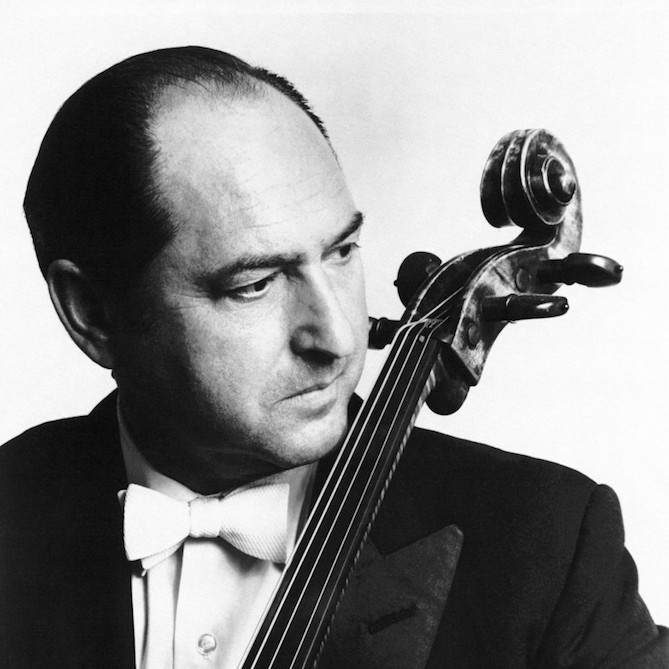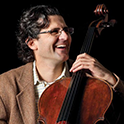
The DO (C) That Changed My Life
Amit Peled
Could one note be so significant in a musician’s life?
At age fifteen, before entering a routine weekly music history class at the Telma-Yellin High School for the Arts in Tel Aviv, Israel, my answer would have been definitely NO. However, in that lesson we learned about the romantic period piano trio form, and our teacher decided to play a record of the slow movement of the Dvorak Trio in F minor op. 65. As a young cellist I must embarrassingly admit that I only knew the Dvorak cello concerto, the ultimate dream of every cellist to study and perform. Back to the classroom, we, the ‘cool’ boys sitting in the last row, were trying to pass on the time talking behind the teacher’s back, hoping to catch an eye glimpse from one of the cool girls—the usual teenager stuff… and then that slow movement started with the piano, immediately followed by one of the most gorgeous melodies played (of course) on the cello.

The cello line starts with the note DO (C) on the A string. This C, coming out of the speakers on that casual morning, on what I thought would be another boring high school day, changed my life forever.
Not knowing who the cellist was I was struck by the beauty, warmth, velvety butter-like sound that came out of the record. No girl or any teenage behavioral code could take my attention anymore from that sound, from that beauty, heavenly poetic expression. Little did I know, I was right then hooked for good to the famous Greenhouse sound.
When the lesson ended, I approached the teacher and asked who were the performers. “Scary” Mr. Zomer, being shocked that I even showed any interest, replied with a winning smile “The Beaux Arts Trio, and the cellist is Bernard Greenhouse.”
Needless to say, I bought that record right away (along with the “Dumky” trio) and promised myself to find a way somehow to meet this Greenhouse cellist from the recording. I didn’t know how and when, but that man would have to teach me how to make this kind of sound!
My dream was fulfilled a few years later when, while in the US, I picked up the phone, admittedly with some degree of typical Israeli Chutzpah, and called Mr. Greenhouse. A warm voice answered gently. Truly nervous, I began reciting from my well practiced notes, “Mr. Greenhouse, my name is Amit Peled. I’m an Israeli cellist and have admired your sound since I was a teenager. I really need to study with you as soon as possible!” By then Mr. Greenhouse was 81 years old and had retired to live with his dear wife Rory in the picturesque little town of Wellfleet on Cape Cod. To end my monologue I concluded “So, can I come and play for you?” Silent on the other side of the line and a few nerve racking seconds later a reply “Well, do I have any choice…?”
Later I learned from him that he was so impressed by my strong will and determination that he simply couldn’t say no (I guess that Israeli chutzpah does sometimes help in life…).
The following weekend I anxiously arrived on the Cape. Once passing the famous sign: Casa Verde (Green House in Italian) at the entrance of the property, I was greeted by Mr. and Mrs. Greenhouse, and was sent immediately down to the famous basement studio to get settled for the lesson. Surrounded by cellos and photos of the Beaux Arts Trio covering all four walls, guess what I decided to warm up with? Of course, the beginning of that slow movement from the Dvorak op. 65 trio…
The door opened a couple of minutes later and without saying a word Greenhouse took his shiny golden reddish renown Stradivarius from the top of the piano, sat down and played that beginning for me! I was in heaven, eyes shining, heart beating in a presto mode, and a soul full of emotions. The sound that kept me going since high school was now real and right there for me to touch and smell. It was as delicious as I imagined it to be so many times in my dreams.
Mission accomplished! Well… not so fast and not so easy. Greenhouse agreed to teach me if I would move to live next to him on the Cape, which of course I did right away. So, for the following year I did somewhat what my new mentor had done as a young cellist, while studying with Pablo Casals in Prades, in the south of France.
We had lessons very intensively, maybe 2 or 3 times a week. We talked about music. We cooked together. We went for walks. We listened to music, and yes every afternoon, we also had the famous Manhattan Cocktail, which he loved so much.
Mr. Greenhouse took me on a journey of exploration that hasn’t stopped ever since. He opened for me that world of sound colors and the beauty of poetry in music. He emphasized and shared the technical tools to use for varying the speed of the vibrato, annunciating each note differently, different bow speeds/expressions for each note, different bow strokes and angles, etc. Finally, I started to understand how to transfer an emotion through the cello to the public with a new arsenal of tools to use. I began to realize how to give each phrase its own life and therefor to be able to build and deliver a story through music. I was in a musical heaven!
Without being aware of it at the time I was introduced by Greenhouse to the Art of Interpretation taught to him directly by the legendary Catalan cellist Pablo Casals. My admiration to Greenhouse and the way he could ‘make a phrase alive’ as he so joyfully used to say, led me to know more in depth Pablo Casals, who would become my next hero. Yet another musical journey had begun.
Believing in destiny has been such a strong force in my life, and therefore, when recently Mrs. Casals Istomin offered me the use of the historic Goffriller cello of her late husband Pablo Casals, I embraced it and accepted it with appreciation, humbleness, and gratitude. A full circle has come.
It is with deep conviction and responsibility that I try these days to carry on that tradition and legacy that I was so fortunate to first receive from my dear mentor and student of Casals, Bernard Greenhouse.
I like to believe that Bernie looks from above and smiles, knowing that we, his many students from all over the world, are continuously searching for that magical note and are committed to passing on his legacy to the generations to come.
Missing you a lot, your student and admirer always,
Amit
 From the United States to Europe to the Middle East to Asia, Israeli cellist Amit Peled, a musician of profound artistry and charismatic stage presence, is acclaimed as one of the most exciting instrumentalists on the concert stage today.
From the United States to Europe to the Middle East to Asia, Israeli cellist Amit Peled, a musician of profound artistry and charismatic stage presence, is acclaimed as one of the most exciting instrumentalists on the concert stage today.
Mr. Peled has performed as soloist with orchestra and in the world’s major concert halls, such as: Carnegie Hall and Alice Tully Hall, New York, Salle Gaveau, Paris, Wigmore Hall, London, Konzerthaus, Berlin, and Tel Aviv’s Mann Auditorium.
Peled is also a frequent guest artist, performing and giving master classes at prestigious summer music festivals such as the Marlboro Music Festival, Newport Music Festival, Seattle Chamber Music Festival, Heifetz International Music Institute, Schleswig Holstein Festival and Euro Arts Festival in Germany, Gotland Festival in Sweden, Prussia Cove Festival in England, The Violoncello Congress in Spain, and the Kfar Blum Music Festival in Israel.
As a recording artist, Mr. Peled has just released two critically acclaimed CDs: “The Jewish Soul” and “Cellobration” under the Centaur Records Label. In 2009/10 Mr. Peled made his debut with the Baltimore Symphony, and the Columbus Symphony, return to Taiwan for the Brahms Double concerto with the National Symphony, to Israel for performances with the Jerusalem Symphony and Maestro Botstein, and will appear with about twenty more orchestras worldwide.
Amit Peled has been featured on television and radio stations throughout the world, including NPR’s “Performance Today”, WGBH Boston, WQXR New York, WFMT Chicago, Deutschland Radio Berlin, Radio France, Swedish National Radio & TV, and Israeli National Radio & TV.
One of the most sought after cello pedagogues in the world, Mr. Peled is a Professor at the Peabody Conservatory of Music of the Johns Hopkins University and plays a rare Andrea Guarneri cello ca. 1689.
Subjects: Artists
